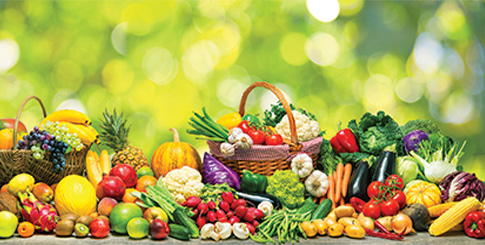Maryland’s busy trade encompasses the entire supply chain with all its ups and downs. In this highly populated area, trading is brisk and provides a setting for opportunities and business lessons learned no matter how your company functions.
What’s Moving
As a prime shipper to metropolitan markets along the East Coast, including northerly neighbor Canada, Maryland growers and wholesalers move millions of pounds of fresh produce. For commodities that don’t grow in the mid-Atlantic locale, they are readily available given Maryland’s proximity to local ports of entry.
Tony Vitrano, president and CEO of the Tony Vitrano Company in Washington, DC, says broccoli and onions have been selling well, along with grapes, soft fruit, and citrus—though the latter was pricey due to weather-related shortages.
“As far as vegetables, people are still eating healthfully,” Vitrano notes. “We sell more kale than we did five years ago, but standard vegetables like broccoli and romaine are better sellers.”
Fresh-cut is holding its own, he says, but is not as big a mover, though his 3- to 5-pound bags of spring mix are popular with both restaurants and stores.
This is backed up by Eddie Salcedo, president of E Foods Distributing, based in Nogales, AZ. Salcedo says watermelon, honeydew, tomatoes, bell peppers, squash, pickles, and eggplant are among his highest demand shipments to the East Coast. And when there are weather events, as Vitrano mentioned, imports from Mexico via Arizona or Texas rise accordingly.
Holly Mozal, a Market News reporter for the U.S. Department of Agriculture (USDA), at the Maryland Wholesale Produce Market in Jessup, cites another example of shifting or rising demand—the highly sought after bitter melon.
This particular trend, she notes, is tied to nearby Washington, DC’s significant Middle Eastern population. “Many produce items that have an association with ethnic pockets throughout the area have increased in demand.”
Another part of the equation is income. Because of Maryland’s high median income, which is upwards of $75,000 a year, Stone Slade, agricultural marketing specialist for the Maryland Department of Agriculture (MDA) in Annapolis, says shoppers don’t hesitate and “can buy whatever they want.” In turn, this creates opportunity for everyone along the fresh produce supply chain.
Despite demand, however, there is one factor dampening spirits—higher shipping rates and delivery delays. Most blame new freight regulation, specifically the implementation of electronic logging devices as the culprit. Salcedo says rates have increased by more than 40 percent, and foresees no relief anytime soon.



